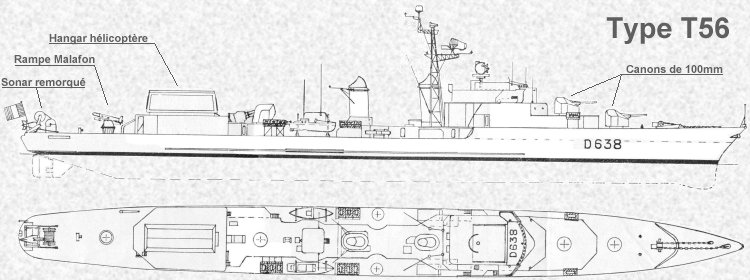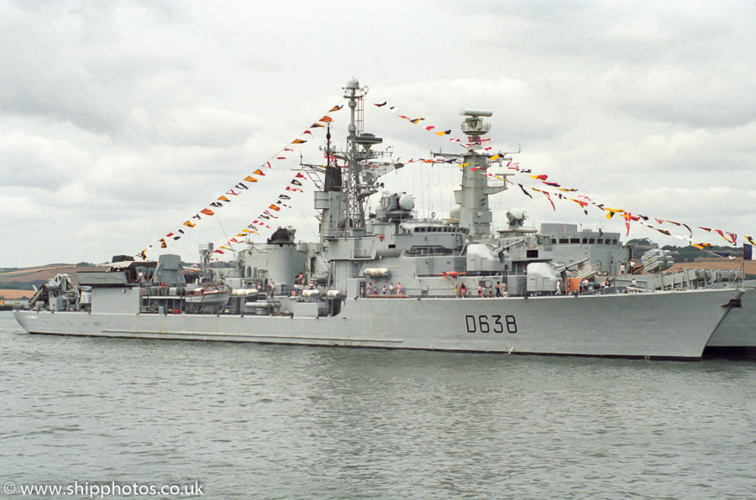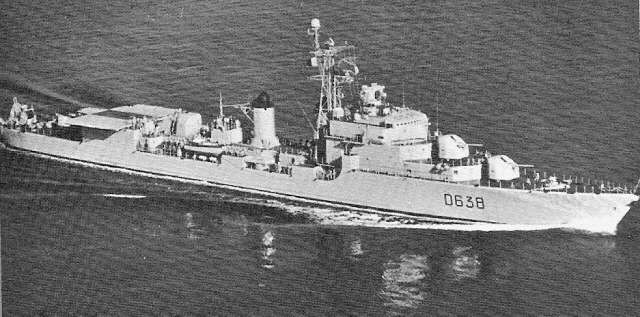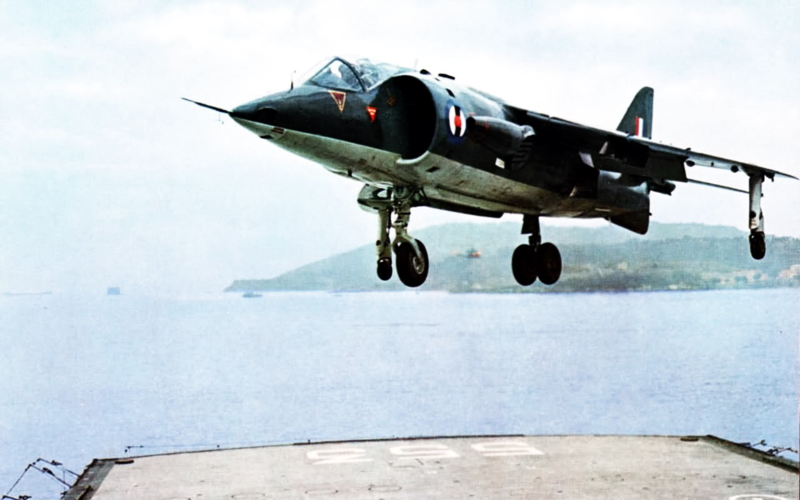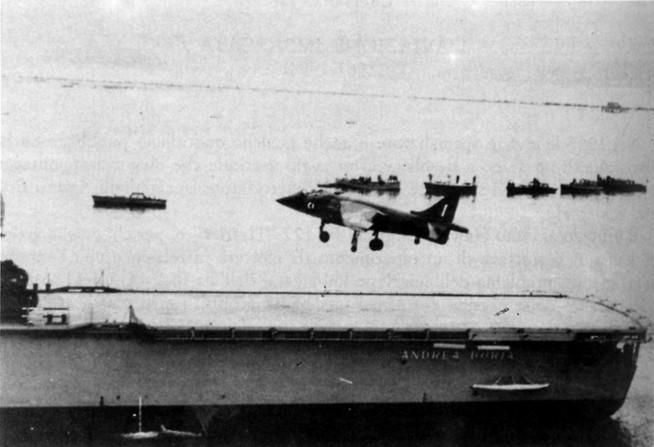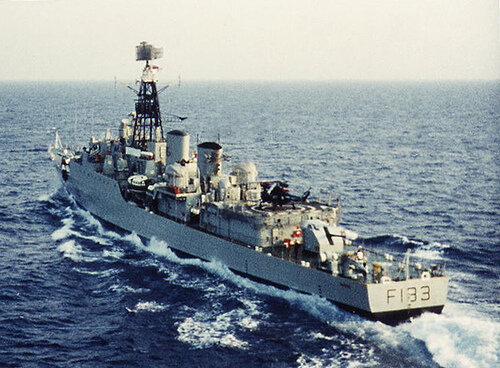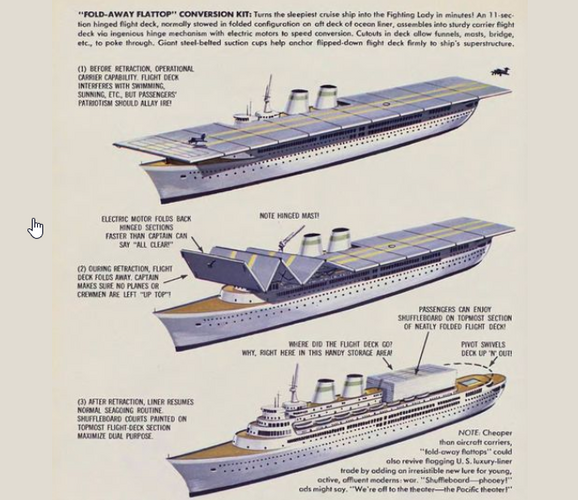- Joined
- 21 May 2006
- Messages
- 2,833
- Reaction score
- 1,916
Here's a really interesting account I found on Project Terminated, by Ronnie Serrano:
'... a couple drawings were done by Pierre Mion for the U.S Navy in the late-1960s which shows using converted Fletcher-class destroyers into makeshift "Harrier Carriers". The plan at the time is to convert the older Fletchers into small carriers to house at the time proposed AV-8A Harriers for use in roles such as convoy protection, anti-shipping/submarine, fleet protection, and amphibious assault roles. The modified Fletchers would carry 1-2 AV-8A Harriers in which they can be rearmed and refuel at any point in time. Also, the Harrier Carriers still had fighting capability with them retaining some of their armament such as their MK-30 127mm cannons. However, while the concept had potential in which the proposal could be done with little problem, the U.S Navy had little interest in the concept and it was later abandoned.'
Does anyone else have anything on these 'Fletcher-class Harrier Carrier' concepts?
Regards
Pioneer
'... a couple drawings were done by Pierre Mion for the U.S Navy in the late-1960s which shows using converted Fletcher-class destroyers into makeshift "Harrier Carriers". The plan at the time is to convert the older Fletchers into small carriers to house at the time proposed AV-8A Harriers for use in roles such as convoy protection, anti-shipping/submarine, fleet protection, and amphibious assault roles. The modified Fletchers would carry 1-2 AV-8A Harriers in which they can be rearmed and refuel at any point in time. Also, the Harrier Carriers still had fighting capability with them retaining some of their armament such as their MK-30 127mm cannons. However, while the concept had potential in which the proposal could be done with little problem, the U.S Navy had little interest in the concept and it was later abandoned.'
Does anyone else have anything on these 'Fletcher-class Harrier Carrier' concepts?
Regards
Pioneer



